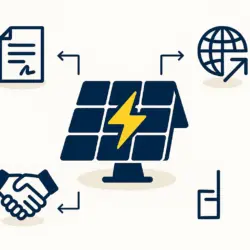Afghanistan Advances with New Afghanistan solar wind projects
In a significant move towards energy self-sufficiency, Afghanistan has approved four new energy projects, including pivotal wind and solar power plants, in the critical provinces of Herat, Kabul, and Balkh. The decision, made by the Afghan High Economic Council, aims to substantially enhance the nation’s energy capacity and lay a solid foundation for future renewable energy developments.
These projects represent a strategic move to harness Afghanistan’s considerable renewable energy potential. The focus on Herat, Kabul, and Balkh is particularly strategic, likely reflecting their geographic and climatic suitability for consistent wind and solar energy generation. This initiative is a critical step in addressing the country’s power needs and reducing its reliance on energy imports. As detailed in a recent Global Solar Report, this aligns with a worldwide trend where solar and wind power are increasingly becoming the most cost-effective sources of electricity, often even without government subsidies.
By investing in this infrastructure, Afghanistan is not just generating power; it is building a more resilient and independent energy future. The development of these plants is a cornerstone for Afghanistan’s solar boom and its journey towards sustainability. Furthermore, such large-scale projects can stimulate local economies and pave the way for domestic manufacturing capabilities. Understanding the basics of solar panel manufacturing reveals the potential for job creation and technological advancement within the country.
The long-term vision extends beyond simply installing panels and turbines. It involves creating a sustainable ecosystem that includes understanding the complete solar panel manufacturing process, sourcing the necessary solar panel raw materials, and investing in the right solar panel manufacturing machines. While the initial investment can be significant, a clear solar panel manufacturing plant cost breakdown shows a viable path toward long-term economic and energy returns.
These four approved projects are more than just power plants; they are a clear signal of Afghanistan’s commitment to a cleaner, more secure energy future. By leveraging its natural resources, the nation is taking a decisive step towards achieving its energy independence and sustainability goals.
To learn more about the intricacies of setting up solar production, explore our comprehensive free e-course on solar panel manufacturing.



